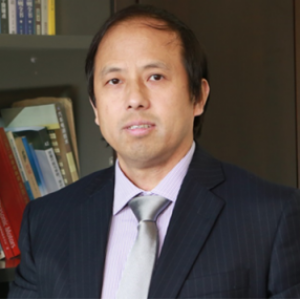Development of 3D technology from fluid power components to bioprinting
3D printing has been developing rapidly and widely used in various fields, such as fluid power and bio-manufacturing. In fluid power, 3D printing is efficient in increasing the fluid power components’ power density and part consolidation. In particular, fluid channels have experienced great design freedom using 3D technology. However, due to the layer-on-layer nature, fabricating defects and failures are found in specific regions, and moreover, a design approach still lacks. Here, we will show the influence of key parameters of 3D printed channels on fluid flow performance. General channel design criteria are developed. The first-version design tool of complex fluid channels based on 3D printing will also be presented, which takes weight, size, and fluid flow performance into account.
Metal 3D printing can also be used to fabricate customized dental implants. Based on gradient processing and surface roughness control, we are able to achieve consistent low roughness on a dental implant surface with complicated geometries. In vitro and in vivo tests have indicated that the technology is promising for the future “immediate implantation”
In bio-manufacturing area, 3D bioprinting technology can be adapted to the dispensing of soft materials containing high-density cells in 3D space, which is a promising solution for the construction of functional tissues and organs in vitro. A novel designed high precision multi-nozzle bioprinter is presented, with a control algorithm for simultaneous control of up to 6 nozzles. Also, the fabrication methods for cell-laden skin and nerve conduit are introduced, both shown positive results for in vitro tests on animal models, with a full potential on future regenerative medicine.

Prof. Huayong Yang received his B.Sc. from Huazhong University of Science and Technology, China in 1982 and Ph.D. degree from University of Bath in 1988. He has been with Zhejiang University since 1989, and was made a full professor in 1996. He is currently the head of School of Mechanical Engineering Zhejiang University. He is a member of the Chinese Academy of Engineering. He was awarded Joseph Bramah Medal in 2017 and is a member in the board of directors in Global Fluid Power Society (GFPS) since 2018.
He holds more than 290 invention patents and published authored over 380 peer reviewed journal papers.
His research interests are in motion control and energy saving of mechatronic systems, development of fluid power component and system, integration of electro-hydraulic system and engineering applications, 3D bioprinting machine and biofabrication applications.
Development of 3D technology from fluid power components to bioprinting
3D printing has been developing rapidly and widely used in various fields, such as fluid power and bio-manufacturing. In fluid power, 3D printing is efficient in increasing the fluid power components’ power density and part consolidation. In particular, fluid channels have experienced great design freedom using 3D technology. However, due to the layer-on-layer nature, fabricating defects and failures are found in specific regions, and moreover, a design approach still lacks. Here, we will show the influence of key parameters of 3D printed channels on fluid flow performance. General channel design criteria are developed. The first-version design tool of complex fluid channels based on 3D printing will also be presented, which takes weight, size, and fluid flow performance into account.
Metal 3D printing can also be used to fabricate customized dental implants. Based on gradient processing and surface roughness control, we are able to achieve consistent low roughness on a dental implant surface with complicated geometries. In vitro and in vivo tests have indicated that the technology is promising for the future “immediate implantation”
In bio-manufacturing area, 3D bioprinting technology can be adapted to the dispensing of soft materials containing high-density cells in 3D space, which is a promising solution for the construction of functional tissues and organs in vitro. A novel designed high precision multi-nozzle bioprinter is presented, with a control algorithm for simultaneous control of up to 6 nozzles. Also, the fabrication methods for cell-laden skin and nerve conduit are introduced, both shown positive results for in vitro tests on animal models, with a full potential on future regenerative medicine.

Prof. Huayong Yang received his B.Sc. from Huazhong University of Science and Technology, China in 1982 and Ph.D. degree from University of Bath in 1988. He has been with Zhejiang University since 1989, and was made a full professor in 1996. He is currently the head of School of Mechanical Engineering Zhejiang University. He is a member of the Chinese Academy of Engineering. He was awarded Joseph Bramah Medal in 2017 and is a member in the board of directors in Global Fluid Power Society (GFPS) since 2018.
He holds more than 290 invention patents and published authored over 380 peer reviewed journal papers.
His research interests are in motion control and energy saving of mechatronic systems, development of fluid power component and system, integration of electro-hydraulic system and engineering applications, 3D bioprinting machine and biofabrication applications.